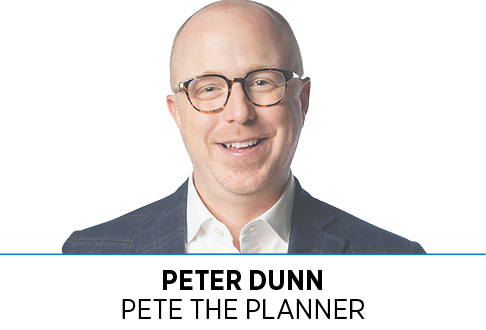Subscriber Benefit
As a subscriber you can listen to articles at work, in the car, or while you work out. Subscribe Now I’m not sure I’ll ever forget March, April and May of 2020. I’ve tried, but the memories won’t disappear.
I’m not sure I’ll ever forget March, April and May of 2020. I’ve tried, but the memories won’t disappear.
I barely remember specific moments, but I viscerally remember how I felt in those days. I was sad, frustrated, scared, and I didn’t want to spend money. I tried my best to support a local restaurant or two, but beyond that, spending didn’t feel prudent.
From what various personal finance studies suggest, I wasn’t alone in that feeling. Anecdotally, it seemed as though most households reduced spending to the tune of $250 to $750 per month.
Various forms of government stimulus began to influence our apprehensive consumerism, and before we knew it, our newfound frugality had gone the way of the kissing booth. It wasn’t until this spring that our appetite for everything started to cool again a bit, certainly influenced by inflation and rising interest rates.
It has me wondering where our consumer sensibility has settled. Because, not only are we battling our desire for more stuff, but we’re battling the fact that our incomes can afford less stuff due to inflation.
In December 2019, Americans’ personal consumption expenditures (PCE) reached $14.7 trillion. That figure fell to $12.0 trillion just four months later. And now the July 2022 number is back up to $17.2 trillion. As you might imagine, PCE not only measures the total dollars spent by Americans but also how rigorous the tribulations of inflation might be.
Strip back this aggregate data a bit and examine your comfort with your own spending over the last 30 months or so.
Here’s how I recently came to terms with what the last 30 months looked like for my household.
In order to account for both inflation and increased consumerism, I’ve decided to track my spending by actually tracking my savings. In other words, I took a look at what percentage of my income I was actively saving.
And instead of sharing the actual percentages with you, I’ve decided to place my different savings rates on a 10-point scale. If I gave myself a 1 during a given period, that would mean I’m saving close to nothing, and if I gave myself a 10, then I was saving a very satisfactory amount of money on a regular basis. We’ll call this a savings index. For the purpose of this exercise, I’m not including retirement savings.
For the period right before the pandemic, I give myself a 3. Now, before you freak out and vow to never read this column again, I’d like to offer you some important context. My emergency fund was full, and I didn’t place any value in increasing it beyond its fullness.
In the months that followed, my views on this changed. By April 2022, my savings index increased to an 8. Sure, our grocery spending increased significantly, but every other spending category fell. On top of that, saving money felt cathartic.
By the fall of 2020, my thirst for normalcy decreased my savings index to a 6, and by the summer of 2021 my savings index fell back to pre-pandemic levels—around a 3. However, something interesting has happened since last December. My desire to save money has climbed significantly. I’m back up to about a 6 or a 7. And frankly, I feel like I might be at an 8 sometime in the next six months.
There’s no doubt that during “good times,” the desire to increase our lifestyles grows. In fact, I would argue this is the default position/strategy for most people. It’s absolutely understandable but not always advisable.
People struggle to throttle this reality; therefore, it can spiral out of control. And whereas people can surmise that inflation doesn’t hurt their ability to spend money, it takes a concerted effort to ensure that is the case. That’s why you should complete a savings index matched up with the previous 30 months and the next six months.
One last note: I find the importance of this exercise increases with age. If you’re in your mid to late 50s, fight the urge to ignore your savings index. It’s going to be your ability to save more and spend less, which will bring certainty to your impending retirement. You must always care, but it’s the 10 years before retirement in which you must care the most.•
__________
Dunn is CEO of Your Money Line powered by Pete the Planner, an employee-benefit organization focused on solving employees’ financial challenges. Email your financial questions to [email protected].
Please enable JavaScript to view this content.
